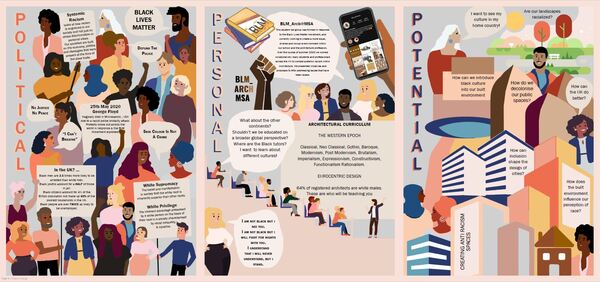Synth - City
How can the current public housing framework, that manifests power and oppression through territorial segregation resulting in racial inequality, be reformed to create anti-racist and inclusive communities?
My thesis project invetigates racial segregation in the built environment. This follows the recent political events of the Black Lives Matter movement in which justice and racial equality is demanded. The presence of systemic racism was at the forefront of the subsequent conversations and the UK was identified as not being innocent: racism here is more covert but still present.
In response to these poignant political events, I was involved in founding the BLM@MSA group. Created by architecture students the group intends to address systemic racism within the architecture school, wider architectural education and profession. My personal involvement in this activism has made me passionate about antiracism and how systems in society can be reformed to combat racial inequality.
As a continuation of my work surrounding this topic, my thesis explores the potential of how antiracism can influence our built environment.
Initially my research focused on the intersections of race and class in our society and the built environment. I analysed how the current social housing system in the UK and facilitates the covert segregation of races and classes. I therefore looked at what new framework or urban policy could replace the current UK social housing scheme in order to ensure more diverse, integrated and anti-racist, sustainable communities.
Following research stages, alongside my colleague Quadri Shogunle – Areg, we developed The Black Brixton Masterplan. We take a stand against gentrification and social cleansing by celebrating Black culture, supporting the Black businesses and residents of Brixton.
Subsequntly, we zoomed in to smaller scale individual projects. My focus is the redevelopment of Geoffrey Close Social Housing Estate. I analyse the existing site and current proposals for the redevelopment before challenging this and developing my own architectural response which is currently a work in progress.


